Bath strapping
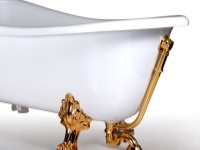
Purpose of piping
Strapping is the name for the sanitary siphon under the bathtub, through which water drains into the sewer system. The second name for the fitting is the overflow drain. It has a bottom and top hole - the drain and overflow, respectively.
Through the drain, water from the bathtub enters the pipe, and the overflow is necessary to ensure that the water does not overflow over its edges. In a siphon these holes are combined and strapped. Such a system saves the bathroom from flooding. But if the intensity of water intake in the bathroom is too high, then even it can not help. Strapping has become popular also because of the simplicity of design and installation.
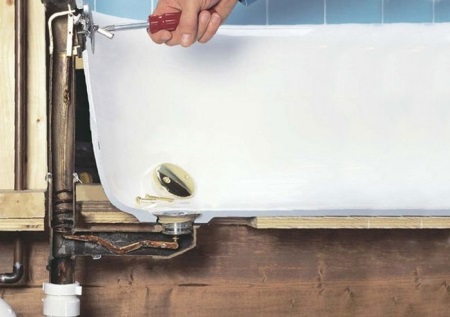
Varieties of materials for strapping
Today, a large number of types of strapping are sold, but they are all predominantly made of two materials:
- High-strength plastic. This is the most common option in private homes and apartments. The advantage of the plastic system is its durability, because it does not succumb to rust and destruction in wet conditions. It can be cleaned with almost any chemicals, and its cost is affordable to every family. But the plastic overflow drain has some disadvantages. The material itself can be damaged by accidental impact or improper installation. The constant action of hot water leads to deformation of the pipe where it was not properly installed.
- Metal. The most common metal used is copper, bronze and brass, less often - steel. But such strapping has more disadvantages than advantages of use. When installing the system, it is necessary to fit to use the necessary tools. Metal pipes are much faster to clog, rust can appear on their surface, and some means lead to the destruction of the metal.
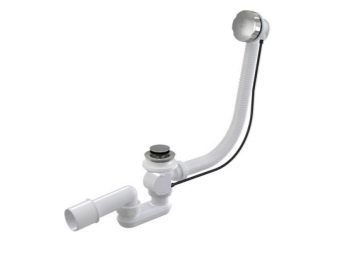
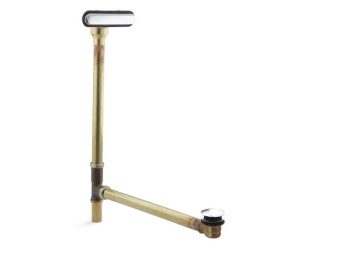
Types of piping by design
To choose the most suitable drain-overflow system for the bathroom, it is necessary to understand the features of the design. According to this criterion, there are the following varieties of strapping:
- Universal. It consists of a siphon, receivers of the drain and overflow, the spout and the outlet for the sewage pipe. The overflow is placed about 5 cm from the edge of the tub. It is externally covered with a grid to prevent large objects from falling in. On the inside there is an overflow pipe connected to the hole which connects it to the spigot. If the water level in the bathtub reaches the overflow, it drains through the tube and enters the sewer, eliminating flooding of the room.
- Automatic. This system was first proposed by the German company Kaiser. Its difference from the universal system is only in a different design of the plug, but the overflow system is almost the same. The plug has a special spring that opens and closes the drain automatically. A person needs to press a special lever with his foot to actuate the plug. It is very convenient and aesthetically attractive. It is worth remembering that such strapping has a complex design, so buy it only the production of well-known companies.
- Semi-automatic. This system is similar to an automatic system. A special receiver with a control unit, a plug and a rope are used to control the piping. A valve or plug is used as a control unit. Under it, the overflow is placed. When a person acts on the block, the action goes to the plug through the rope. You don't even have to wet your hands in water, because all you have to do is act on the block to open the opening.
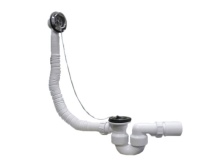
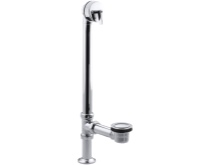
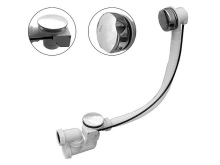
Advantages of strapping
The main advantage of using strapping is to prevent water from overflowing over the edge of the tub. This system is unified, you do not need a separate drain into the sewer system for the overflow.
Of the pluses of automatic and semi-automatic systems can be noted the convenience of use. They look better than a simple overflow, to open them you do not need to bend over, but only press the lever or open the valve.
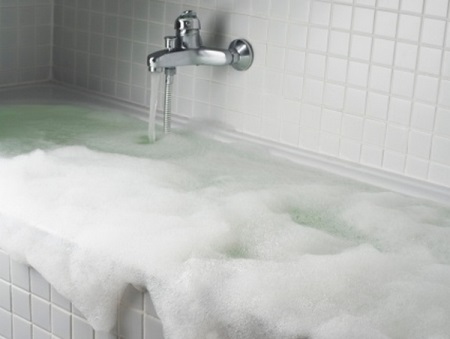
Any overflow drain system is very easy to install. Of course, it is much more difficult to install metal strapping, which also needs high-quality sealing. Therefore, experts recommend choosing plastic systems, which are much cheaper.
Replacement and installation of strapping
The installation process depends on many factors, including the type of strapping, the material of manufacture and so on.
The standard installation procedure is divided into the following steps:
- Dismantling the old system. Strapping made of plastic can not even be unscrewed, but simply broken. Dismantling a metal system can take some time. If the pipes are not unscrewed, you will have to use a grinder. In its operation, you need to be extremely careful not to damage the bathtub itself.
- The new system is checked, namely, whether all the parts for attaching to the pipes are suitable, and whether there are sealing elements.
- Disconnect the grids from both openings.
- If possible, it is better to turn the bathtub upside down in order to properly install the siphon and the receiving tube. But if the bath is cast iron, it is quite difficult to do.
- On the drainage hole mount the grid and fasten the entire structure with a coupling bolt. It is not necessary to clamp the plastic design very strongly, because it can simply burst.
- Overflow pipe is mounted in the same way. At the same time, the corrugation is stretched to the right size.
- There can be 4 or 2 gaskets in the set of piping. In the first case, they are installed on both sides of the bathtub for the drain and overflow. In the second case, they are installed on the outside to prevent leaks.
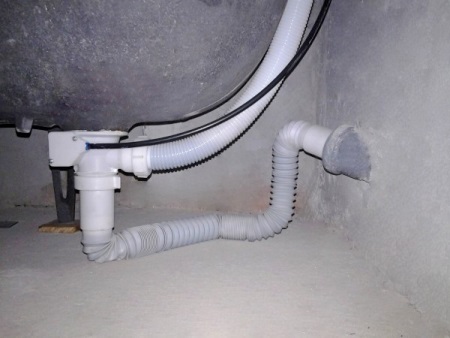
Thus, the strainer (drain overflow) is simply necessary for any bathtub. Without it, you can easily flood the entire room and the downstairs neighbors.




